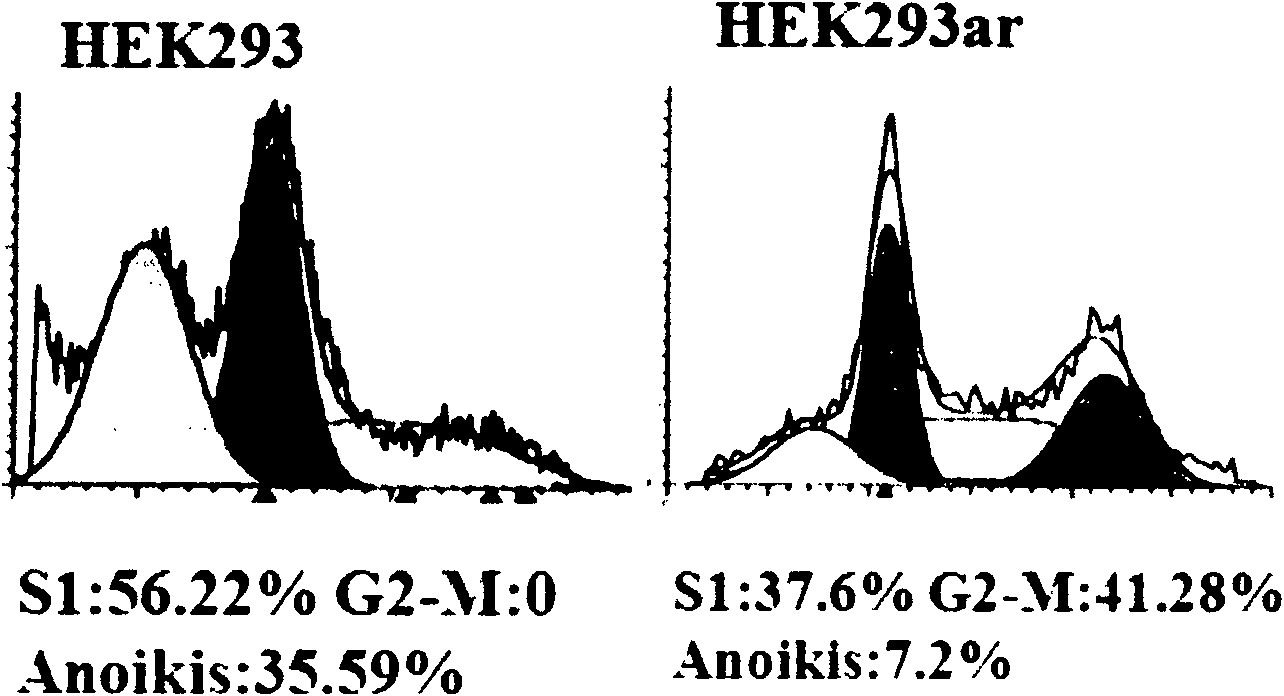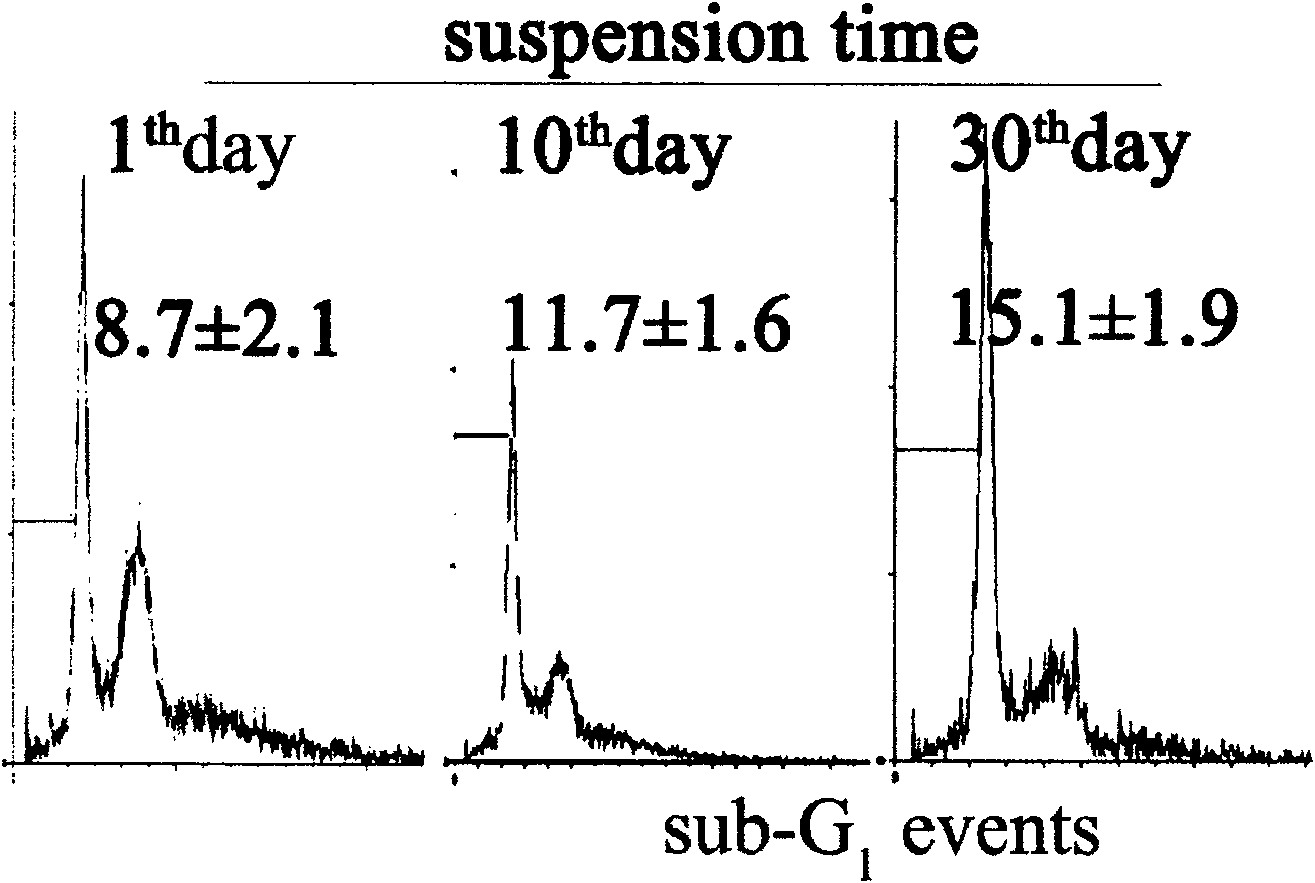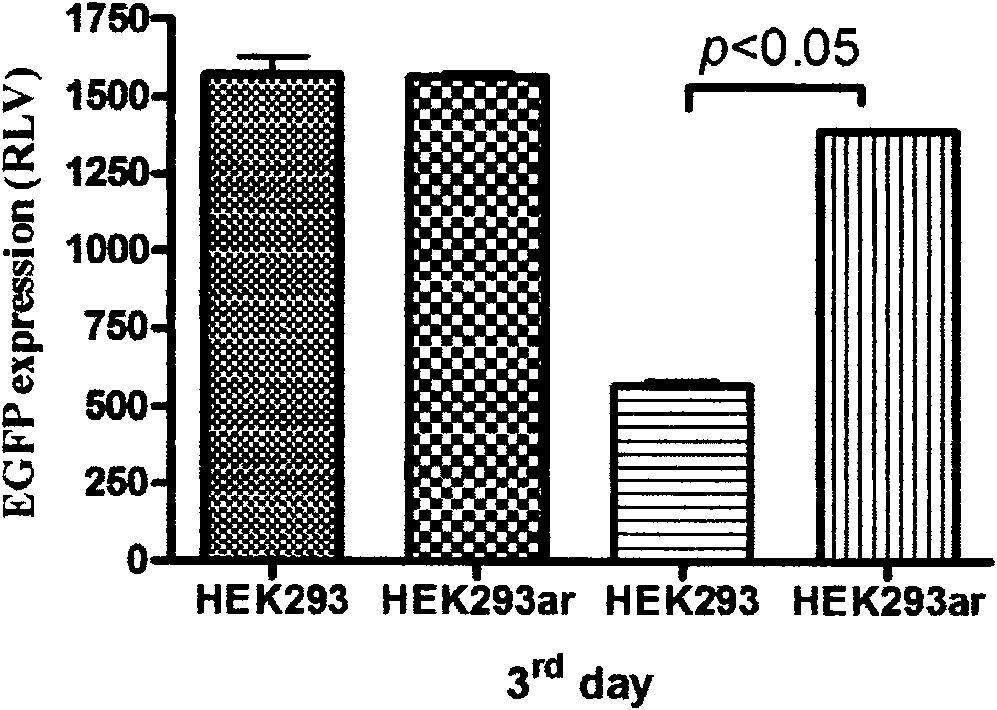Novel human embryo kidney 293 cell HEK293ar of mammal engineering cell subset
A technology of cell subgroups and mammals, applied in the direction of microorganisms, biochemical equipment and methods, and the use of vectors to introduce foreign genetic materials, etc., can solve the problems of low transfection and protein production efficiency, and achieve the effect of reducing loss
- Summary
- Abstract
- Description
- Claims
- Application Information
AI Technical Summary
Problems solved by technology
Method used
Image
Examples
Embodiment Construction
[0022] The acquisition and use of a cell subpopulation human embryonic kidney 293 cell HEK293ar for high-efficiency transient transfection of exogenous genes and culture without vectors.
[0023] 1. Cell culture: Human embryonic kidney 293 parental cells were cultured at 6×10 5 The density of the cells / flask was inoculated into DMEM1640 (Dulbecco's modified Eagle's medium1640, American Life Technologies) medium containing fetal bovine serum at 37°C, 5% CO 2 Incubate until the cells are confluent in the flask.
[0024]2. Cell anoikis culture: spread a thin layer of pre-sterilized agar solution containing 1.5% in the culture bottle in an ultra-clean bench, and place it to dry; digest the cells cultured in the above step 1 with trypsin digestion solution, Collect the cells by centrifugation at 800rpm for 5min; use DMEM1640 containing 0.5, 0.75, 1.0, and 1.5% of Methocel (methyl cellulose, American sigma company) to make cell suspensions from the collected cells, and place them i...
PUM
 Login to View More
Login to View More Abstract
Description
Claims
Application Information
 Login to View More
Login to View More - R&D
- Intellectual Property
- Life Sciences
- Materials
- Tech Scout
- Unparalleled Data Quality
- Higher Quality Content
- 60% Fewer Hallucinations
Browse by: Latest US Patents, China's latest patents, Technical Efficacy Thesaurus, Application Domain, Technology Topic, Popular Technical Reports.
© 2025 PatSnap. All rights reserved.Legal|Privacy policy|Modern Slavery Act Transparency Statement|Sitemap|About US| Contact US: help@patsnap.com



